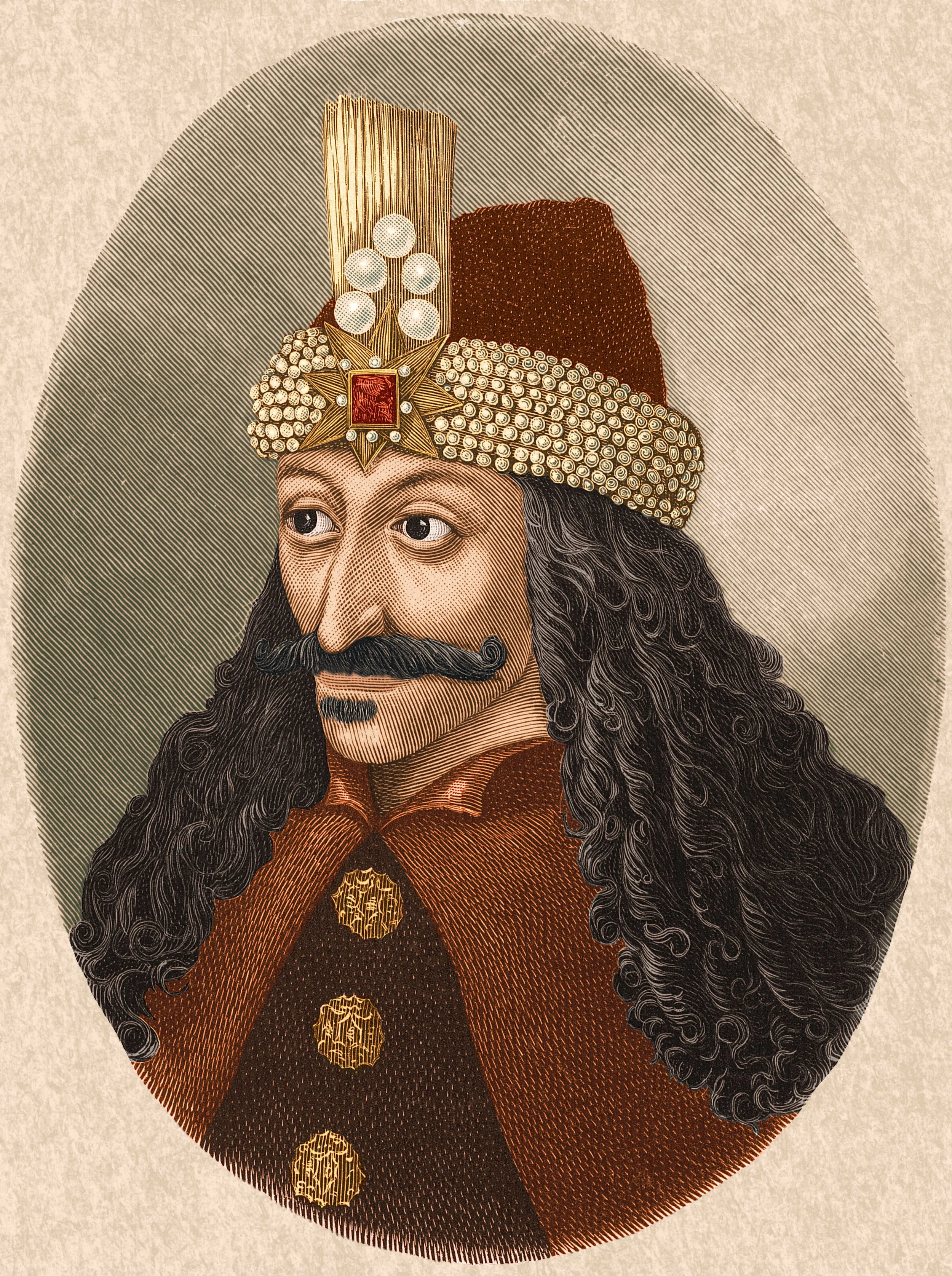Vlad Draculea: The Villain Before the Vampire
Bram Stoker’s sensational Dracula delivered the myth of the nightmarish, elegant vampire to readers in 1897, and many since have heard of his likely inspiration for the title character: Vlad III Draculea, 15th-century Wallachia’s dreaded commander. Looking back at the history of his sensational barbarism, how much is true and how much can be attributed to legend? National Geographic, among other biographical sources, sets up to answer these questions, beginning with the birth of the boy who would one day be known as Vlad the Impaler.
Transylvania, often known best as the birthplace of its grimmest resident, would become part of modern-day Romania in 1947. In 1431, Vlad III’s estimated birth date, Transylvania neighbored the principalities of Wallachia and Moldavia. His father, the nobleman Vlad II Dracul, ascended to the leadership of Wallachia in 1436 as a ‘voivode,’ a type of military prince, and young Vlad III was moved to Wallachia. Six years later, Britannica narrates, Ottoman Sultan Murad II took custody of Vlad III and one of his younger brothers, Radu the Fair, to ensure their father’s loyalty to his newly-claimed Ottoman allegiance.
Vlad II’s reign didn’t last much longer. In 1447, Vlad III received word that Janos Hunyadi, the regent of Hungary, had ordered Vlad II dethroned and killed, placing the unrelated Vladislav II as the voivode of Wallachia. In the same year, Vlad II’s older brother Mircea II was assassinated. Yet Vlad III and Radu still lived, and after their release from the Ottomans, Vlad III began his mission to reclaim his father’s voivodate. It did not go easily. Supported by the Ottomans, the 16-year-old Vlad III claimed the position briefly in 1448, and was ousted by Vladislav II two months later. He continued to wage his campaign while crossing the Ottomans to align with Moldavia, making peace with Hunyadi, aligning with Transylvania, and rekindling his allegiance with Hunyadi. In 1456, Vlad III invaded Wallachia successfully and slew Vladislav II himself, according to National Geographic. He’d achieved a nearly decade-long goal. But with Hungary and the Ottomans both remaining threats, how would he handle Wallachia’s stability?
ThoughtCo agrees with the allegations of Vlad III’s brutality: his notorious habit of impalement, his bloody lack of mercy for boyars, or Wallachian noblemen, who opposed his reign. They simply dispute the ideas that these punishments were delivered as “a sudden orgy of violence” in a short period of time. National Geographic details his reign further, discussing his measures to eliminate even minor crime with zero-tolerance policies, and his move to appoint defenseless commoners and foreigners to public positions, ensuring his total control over their lives. His infamous vengeance against the specific boyars who had schemed against his family: the Easter banquet of 1459, where 200 boyars’ families were murdered and the noblemen pressed into slavery. He would repeat the banquet tactic by allegedly locking a multitude of homeless citizens and beggars into a feast hall and burning them alive for what he considered “thievery.”
Did Vlad II bring any benevolent policy to Wallachia? Artisans and peasants, at least, he liberated from their former tithes to the Ottoman empire. He formed a new class of elites after eliminating the boyars, enabling farmers with decorated military backgrounds to join his valued viteji unit. But his notoriety earned him more attention, and for good reason. He impaled Saxon merchants for flouting his trade embargo and slaughtered cities of Catholics, backed by the Orthodox Christians of his voivodate. He temporarily repelled a 1462 Ottoman invasion by reportedly impaling over 23,000 Ottoman peasant families before the enemy’s path. Yet he would ultimately face dethronement and replacement by Radu the Fair, who was backed by the Ottomans and had gained additional support from the remaining boyars.
Imprisoned by Hungary for years, Vlad III pursued his final attempt to reclaim Wallachia’s voivodate after his release in 1474 or 1475. The principality fell under his bloody, exhausting command once more in 1476, but the Impaler soon lost his life to an Ottoman rival. In perhaps a fitting fate for a man who had put so many victims on display, his head was allegedly sent to be displayed over the gates of Constantinople.
National Geographic estimates that over his 45-49 years of life, roughly nine of them as voivode, Vlad III Draculea was responsible for over 80,000 deaths. He spilled blood rather than drinking it, but such a body count certainly exceeds that of his supernatural successor. In the case of Vlad III, even by his milder accounts, the reality proves itself even gorier than the fiction.






